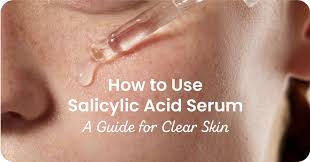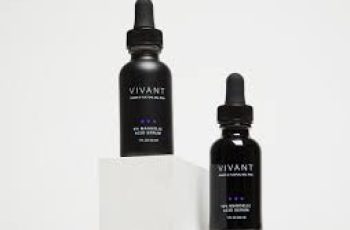
How Long Should You Leave Salicylic Acid on Your Face? Here’s What Dermatologists Recommend
Salicylic acid is a powerhouse ingredient in skincare, renowned for its ability to deeply exfoliate the skin and target stubborn issues like acne, blackheads, and congested pores.
Its popularity has soared because it not only works on the surface but also penetrates deeply into the pores, making it ideal for oily and acne-prone skin types seeking long-term clarity and smoothness.
What sets salicylic acid apart from other exfoliating ingredients, such as alpha hydroxy acids like glycolic or lactic acid, is its oil-soluble nature, allowing it to travel deeper into the skin.
This oil solubility enables salicylic acid to break through sebum buildup and target clogged pores directly, which is why it’s frequently recommended for persistent or hormonal acne.
However, because of its ability to travel deep into the skin and disrupt dead skin cells and oils, it can also be drying and irritating when used incorrectly or too frequently.
Common side effects include dryness, flaking, redness, tightness, or even peeling—especially when the skin hasn’t yet built tolerance to the active ingredient.
For this reason, dermatologists always advise newcomers to introduce salicylic acid gradually into their skincare routine, starting with low concentrations and short contact times.
So, how long should you actually leave salicylic acid on your face? Well, the answer depends heavily on the type of product you’re using, your skin’s sensitivity, and your long-term goals.
1. How Long to Leave Salicylic Acid on Your Face Depends on the Product Type
Salicylic acid comes in various skincare formulations—cleansers, toners, serums, face masks, spot treatments, and even exfoliating pads—and each requires a different approach.
If you’re new to salicylic acid or have sensitive skin, starting with a rinse-off product like a cleanser is often the safest and most effective method to minimize irritation.
Salicylic acid cleansers typically stay on your skin for 1 to 3 minutes before being rinsed off, providing enough contact time to loosen dead skin cells and clean pores without overwhelming the skin.
Because rinse-off products limit the exposure time, they’re usually formulated with a lower concentration of the acid, making them ideal for daily use or for those with easily irritated skin.
If you’re using a face wash, try the popular “60-second rule,” which involves massaging the cleanser into the skin for one full minute to allow the active ingredient to activate and do its job.
This helps ensure salicylic acid penetrates the pores, breaks down sebum, and prepares the skin for the next steps of your skincare routine—like toning, moisturizing, or targeted treatments.
2. Leave-On Salicylic Acid Products Can Stay on Longer—Even Overnight
Once your skin has built up enough tolerance and you’ve noticed fewer side effects, you can start exploring leave-on treatments like toners, serums, and overnight spot correctors.
Serums containing salicylic acid are often more concentrated and are designed to remain on the skin for hours or overnight, offering a more intensive exfoliating and clarifying effect.
Leave-on formulas can contain between 0.5% to 2% salicylic acid, and they work by continuously clearing out pores and reducing inflammation while you go about your day—or while you sleep.
However, because they remain on the skin for extended periods, they carry a higher risk of irritation, especially for people with dry, sensitive, or reactive skin types.
That’s why it’s so important to patch test any new salicylic acid product for 24 hours before applying it to your entire face—this helps avoid unwanted redness, stinging, or flare-ups.
When using a leave-on product, apply a thin layer and follow with a moisturizer to lock in hydration and prevent the acid from over-drying or disrupting your skin’s protective barrier.
3. Can You Use Salicylic Acid Overnight? Yes, But Only Under Certain Conditions
Leaving salicylic acid on overnight is safe—if and only if—your skin has adjusted to its presence and is not prone to extreme sensitivity, flakiness, or dryness.
This method is especially useful for people with oily, acne-prone, or congested skin types who need deeper, more extended exfoliation and oil control.
Even when used at night, salicylic acid can increase the skin’s sensitivity to the sun, so it’s crucial to wear a broad-spectrum sunscreen of SPF 30 or higher during the day.
If you’re using a salicylic acid serum or spot treatment overnight, try not to layer too many actives like retinol, AHAs, or vitamin C in the same routine, as this could increase irritation.
Stick to a simplified evening skincare routine when using overnight salicylic acid: cleanse, apply your treatment, and finish with a soothing, non-comedogenic moisturizer.
4. How Long Should You Leave Salicylic Acid Masks or Peels on Your Face?
Salicylic acid face masks or exfoliating peels typically contain higher concentrations of the acid and should be used no more than once or twice a week, depending on your skin’s condition.
These products often require a very specific application time—usually between 5 to 10 minutes—before rinsing off completely to avoid chemical burns or excessive skin shedding.
Always follow the instructions on the packaging and never leave salicylic acid masks or peels on for longer than recommended—even if your skin “feels fine” during application.
When in doubt, less is more. Overuse or prolonged exposure can backfire, weakening your skin barrier and causing breakouts, redness, or even long-term sensitivity to active ingredients.
5. Should You Moisturize After Using Salicylic Acid? Absolutely
Moisturizing after using salicylic acid is essential, not optional. This is because the acid can strip the skin of its natural oils and disrupt its protective barrier.
Using a moisturizer packed with hydrating ingredients like hyaluronic acid, glycerin, or ceramides helps lock in moisture and prevents the skin from becoming dry, tight, or flaky.
Moisturizers also help seal in all the active ingredients you’ve applied and act as a physical barrier that protects the skin from pollutants, UV rays, and environmental stressors.
By following up with the right moisturizer, you not only support your skin’s recovery but also maximize the results of salicylic acid without the unwanted side effects.
6. How Long Does It Take for Salicylic Acid to Start Working?
Don’t expect overnight miracles—salicylic acid takes time to produce visible results, especially when treating chronic acne, blackheads, or textural concerns like enlarged pores.
On average, it can take 6 to 8 weeks of consistent use before you start noticing a significant improvement in your skin’s clarity, tone, and overall smoothness.
If you’re using it for active breakouts, it may initially seem like your skin is getting worse—this “purging” phase is actually normal and shows that the acid is clearing deep-seated impurities.
Stick with it. Once the purging subsides, your skin should become clearer, calmer, and less oily over time, provided you’re not overusing the ingredient or layering too many actives.
Final Thoughts: Listen to Your Skin and Be Patient
How long to leave salicylic acid on your face depends largely on your skin type, product formulation, and how familiar your skin is with chemical exfoliants.
Start with rinse-off cleansers and work your way up to leave-on treatments like serums and overnight spot correctors—always patch test and adjust based on how your skin reacts.
Moisturize religiously after use, protect your skin with SPF, and most importantly, don’t rush the process—clear, healthy skin is a long game, not a sprint.
If you’re unsure which product or application method is right for you, consult with a dermatologist or licensed esthetician who can help guide you on your skincare journey.


